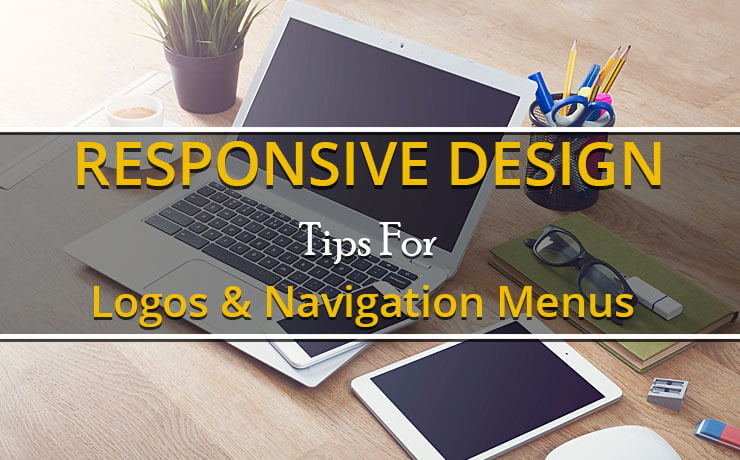Responsive Design Tips For Logos & Navigation Menus

Chad Faith
Director of Content

Responsive web design has become a staple for frontend developers. It possesses great value in the modern world but it’s common to experience difficulty in understanding how to design responsive layouts. It’s pretty intimidating when you need to cover so many unique areas of a website to achieve responsive design.
However, you will find that it’s more manageable to focus on individual elements, one at a time, because it can help you better understand the goals of a user. For starters, you can consider looking at navigation menus and logos as they also pertain to responsive design. If you are in need of effective responsive design tips, you have certainly come to the right place.
Design Tip #1: Iconify Your Logo
Today, a great array of logos tends to incorporate some text with a graphic or icon to represent a brand. If you planning to create this kind of logo design, you should consider iconifying them down to a symbol of its full version. When it comes to responsive headers, you should note that there isn’t enough space to accommodate a full logo. If you want to achieve a clean responsive layout, it’s a worth sacrifice to make. Don’t worry about logo recognition problems. People have been on the Internet long enough to know top-left corners are ‘houses’ for logos.
Design Tip #2: Opt for Thinner Navbars
It is true that big headers or oversized headers with multi-level link tiers look great on larger screens. However, the same effect does not extend to smaller screens. That’s why your headers should be restricted as needed. Mobile apps tend to feature fixed headers and if your website is designed to be surfed from smaller devices, you need to shrink your fixed header down as well. You will leave more room for content as well as provide users direct access to navigation menu at the same time. When you style the navbar, take the overall screen space into consideration. It’s fine if you do not want to it stay fixed. However, do shrink it a bit to save room at the top of the page.
Design Tip #3: Keep Navigation Simple
It’s a good practice to limit or reduce the number of links in the navigation while revamping for smaller screens. This makes your navigation section much more accessible. If you currently have multi-tiered dropdown menus implemented, it’s a good time to ditch a few links to clear the clutter. You should only keep all dropdowns intact when you have the correct strategy in place. In addition, there are menu styles to choose from and your choices include hamburger menus and flyout menus – be sure to choose one that’s most appropriate for your responsive header design needs. The process of navigating pages becomes simpler when there is more room to click and place larger link text.
Design Tip #4: Always Adjust Full screen Backgrounds
Today, a majority of landing pages utilize full screen backgrounds with an aim to attract more attention. It is true that this is a powerful technique. However, it only works best on larger monitors. If you want to handle this on a smaller screen, you can consider realigning the image to fit in the window or crop the background image after a certain breakpoint. Although this processes involve some CSS work, it becomes easier once you get the hang of it. The golden rule to follow, while resizing the image container to fit in proportion with mobile devices, is to keep the focal point in view at all times. Modern responsive layouts are designed to compress the image and keep a central focal point, so it’s all good.
 Free
Consultation
Free
Consultation Free
Google Ads Audit
Free
Google Ads Audit







